
It has always been my contention that the 5.0L Mustang saved Ford, or at the very least, Ford Performance.
Prior to the introduction of the 5.0L, Ford was serving up the Pinto-based Mustang II.
Once the 5.0L stepped back onto the scene, from its humble 140 horsepower offered in 1979, the horsepower wars were back in full swing. It was the beginning of nothing less than the next (and longer-lasting) muscle car era, one that continues today.
The power outputs of the current combos are far removed from the 157-hp H.O. 5.0L offered back in 1982, but time and technology have marched on. In fact, the power output of a good V6 these days more than doubles the power output of the 1982 version.
As good as the 5.0L Coyote, supercharged Shelby, and twin-turbo EcoBoost motors are, every one of them owes a debt of gratitude to the one that started the revolution. All hail the 5.0L Mustang.
The year 1982 might mark the beginning of the fabulous 5.0L, but things really took off for Ford (and the mega-million-dollar aftermarket industry) once the blue-oval boys introduced the fuelie Ford.
Though the carb contingent chanted doom and gloom, the reality was that fuel injection only enhanced performance. Once we figured out how to manipulate it, we fell in love with performance all over again.
Soon after, we started seeing some serious hardware in the form of cylinder heads, camshafts, and even superchargers. Performance was alive and well.
Good thing too, as the 5.0L Mustang was far from perfect. The long-runner intake, small-port heads, and mild cam timing all combined to enhance torque production and fuel economy, but did little to allow the big-bore, short-stoke 302 to storm on the big end.
That’s where companies like Trick Flow Specialties came in. In fact, they made life easy for 5.0L owners, by combining a complete top-end kit that offered all the important power-producing components in one package. With the right heads, cam and intake, the 5.0L can make not just impressive torque, but impressive horsepower to match. Enter Trick Flow’s 5.0L Track Heat Engine Kit.
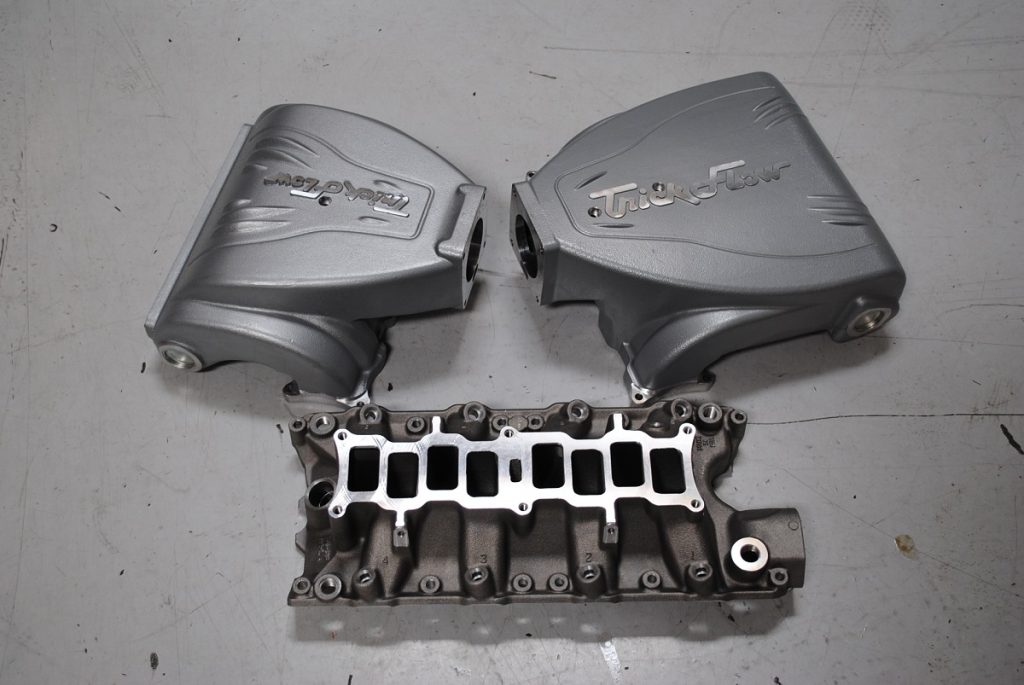
Given the vast array of performance hardware available for the 5.0L Mustang, many enthusiasts had a difficult time deciding on the exact combination. The Track Heat Engine kit took the guesswork out of the combination, as it featured components designed to work harmoniously together to maximize power production.
Not only did it feature the correct combination of what we refer to as the Big Three power producers (heads, cam, and intake), but it also also included things like roller rockers, head bolts, and gaskets. Toss in a new timing set, ideal for a high-mileage 5.0L, and new hardened (and correct-length) pushrods, and you start to appreciate the completeness of the kit.
Though the kit was offered in other combinations, we selected the Track Heat with its long-runner intake and TrackMax cam profile.
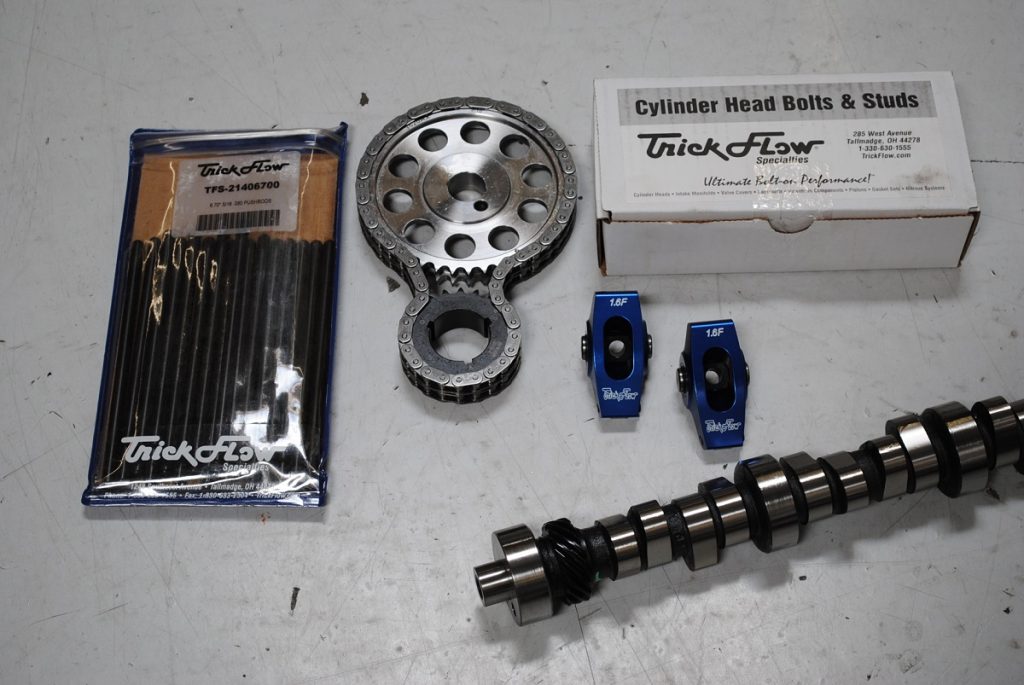
The hydraulic roller cam offered a .542/.563 lift split, a 224/232-degree duration split and 112-degree LSA. The cam was designed to be teamed with a set of as-cast, Trick Flow Twisted Wedge (170 cc) heads, but we stepped up to the larger, seemingly more powerful, CNC-ported 185-cc heads. Capable of supporting nearly 600 hp (given the flow rate), the ported heads were likely overkill on this mild combo, and the standard Twisted Wedge heads (with flow figures to support 500 hp), would be more than adequate.
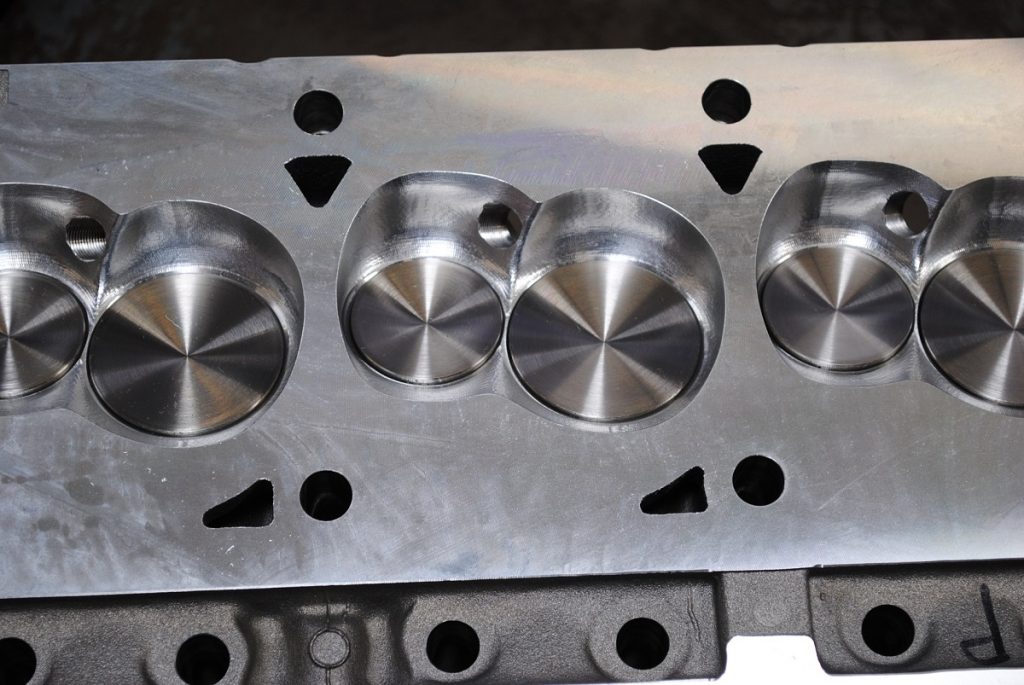
To put the top-end package to the test, we first ran a stock 1994 5.0L on the engine dyno.
We performed a similar test using a 5.0L Explorer motor, but ran that combo with a carbureted intake. On the 1994 5.0L, we ran both the stock and Trick Flow-modified combos using a Fast XFI management system, 42-pound injectors from Ford Racing and a set of Hooker long-tube headers.
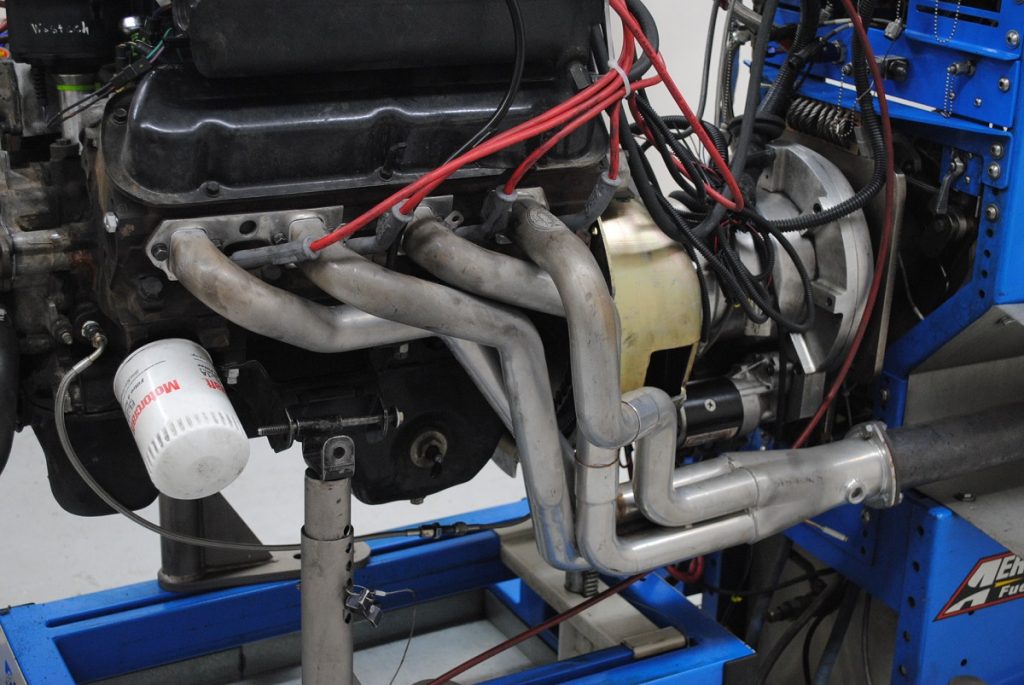
The first step was to run the 5.0L with the stock top end, meaning heads, cam and intake, as well as the bolt-down rockers and 65-mm throttle body.
Run in this stock (ish) configuration, the 5.0L produced 259 hp at 5,000 rpm and 320 foot-pounds of torque at 3,600 rpm.
As we have come to expect from a 5.0L fuelie motor, the stock combination offered plenty of torque, but the 259 (peak) hp was hardly much to get excited about.
The ideal upgrade would not only improve peak power and allow the motor to rev efficiently to 6,000 rpm (instead of just 5,000 rpm), but also bolster peak torque production in the process. Obviously we had high hopes for the Trick Flow Top-End kit, so we tore into the stock 5.0L and removed all the stock components, including the heads, cam, and intake.
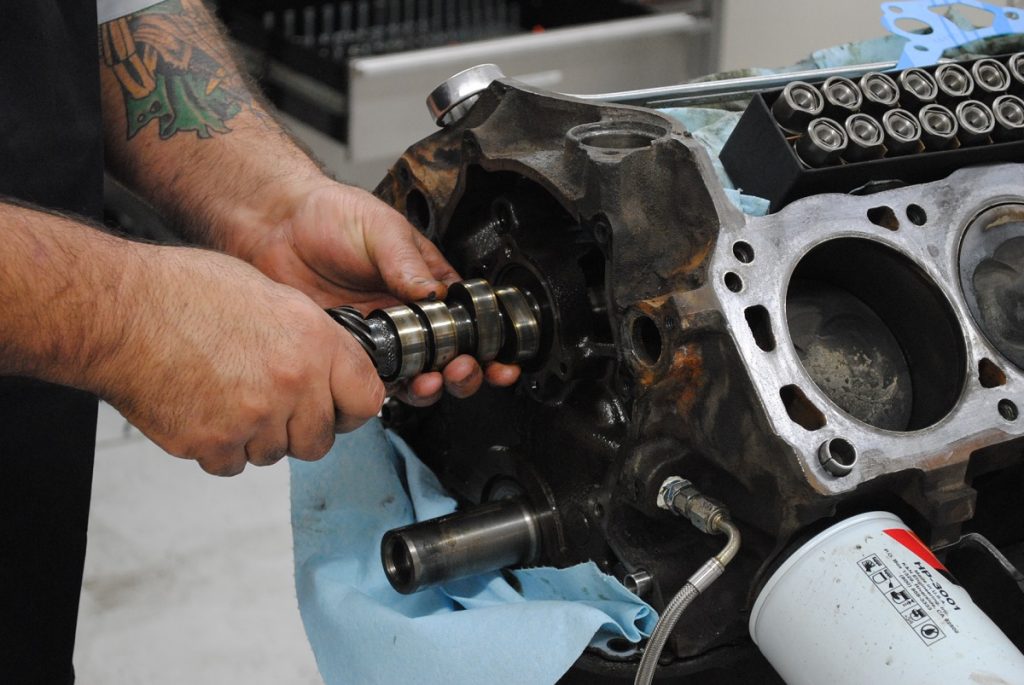
After stripping the motor down to the short block, we installed the Trick Flow components, including the 185-cc heads using the supplied head gaskets and head bolts. We also combined the Trick Flow cam with the stock hydraulic roller lifters and the new double-roller timing chain.
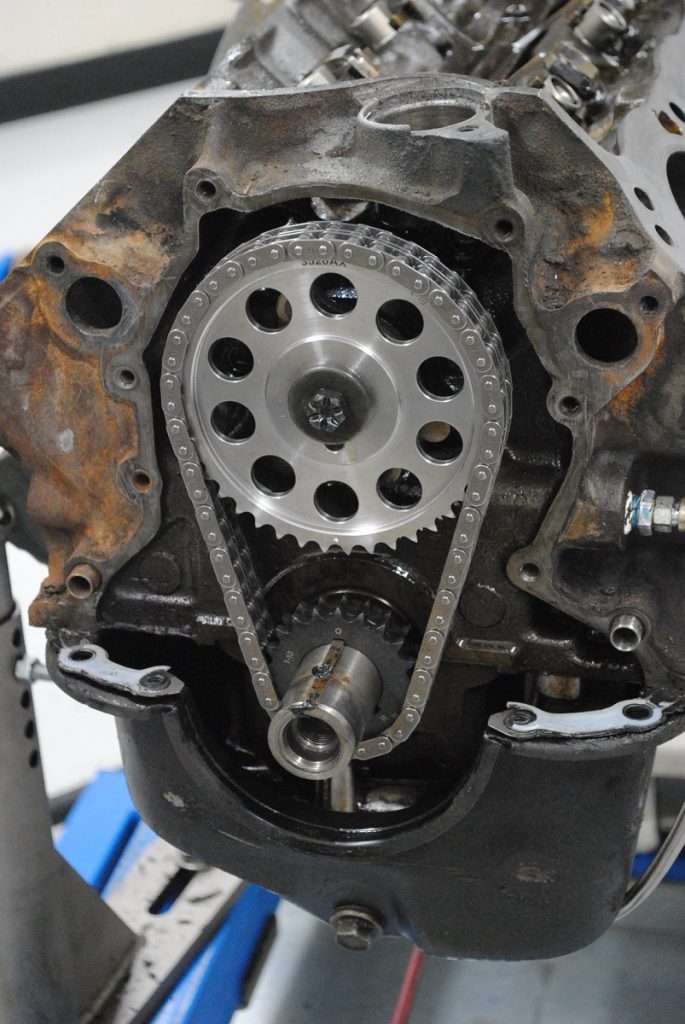
With our cam in place, we installed the new pushrods and adjusted the 1.6-ratio aluminum roller rockers. We then finished up the install with the upper and lower intake and 75-mm Accufab throttle body.
After a little tuning, the new package pushed the peak power output to 378 hp at 6,000 rpm and 354 ft.-lbs. of torque at 5,200 rpm. Note that both peaks occurred higher in the rev range than the stock combo, meaning the 302 could now be run safely beyond 6,000 rpm and still make power.
The combo netted an increase of nearly 120 hp (measured peak to peak), but the gains were as high as 160 hp out near 6,000 rpm. Given the fact that our head choice had another 200 hp (or more) worth of head flow, we were just scratching the surface of this combo. What we needed now was more displacement (like a 347), or the usual combination of cam, compression and rpm!
Another test for another day!
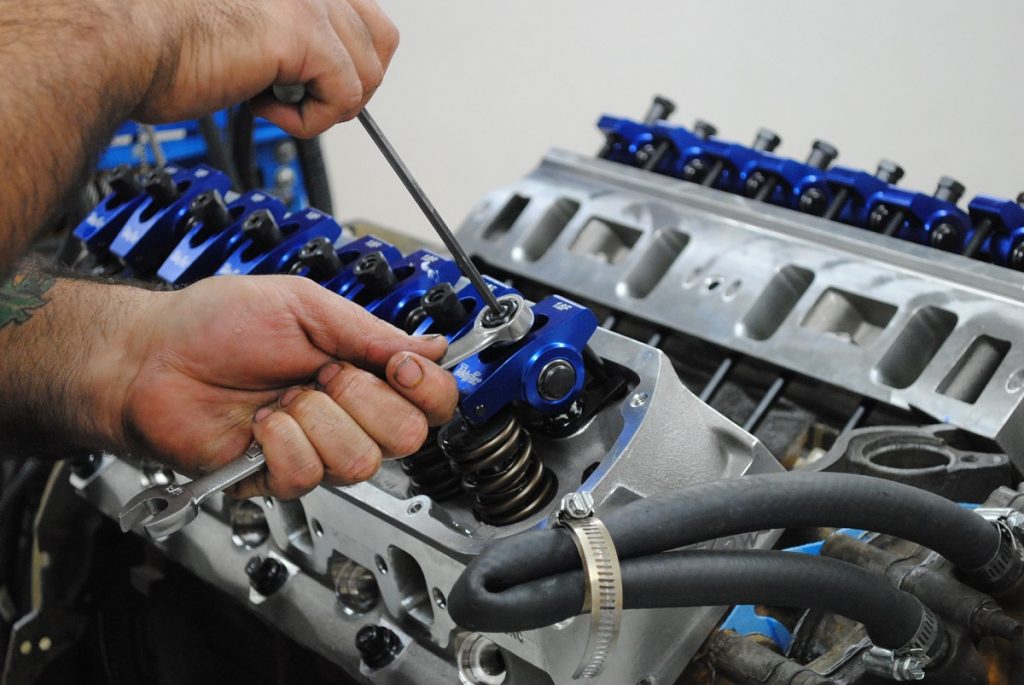
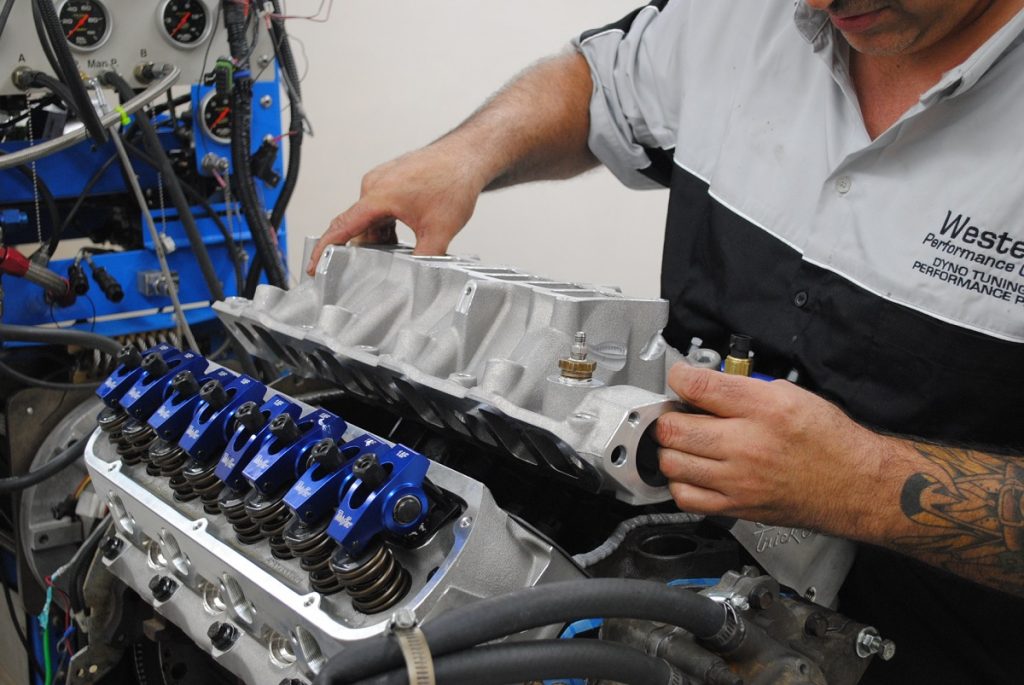
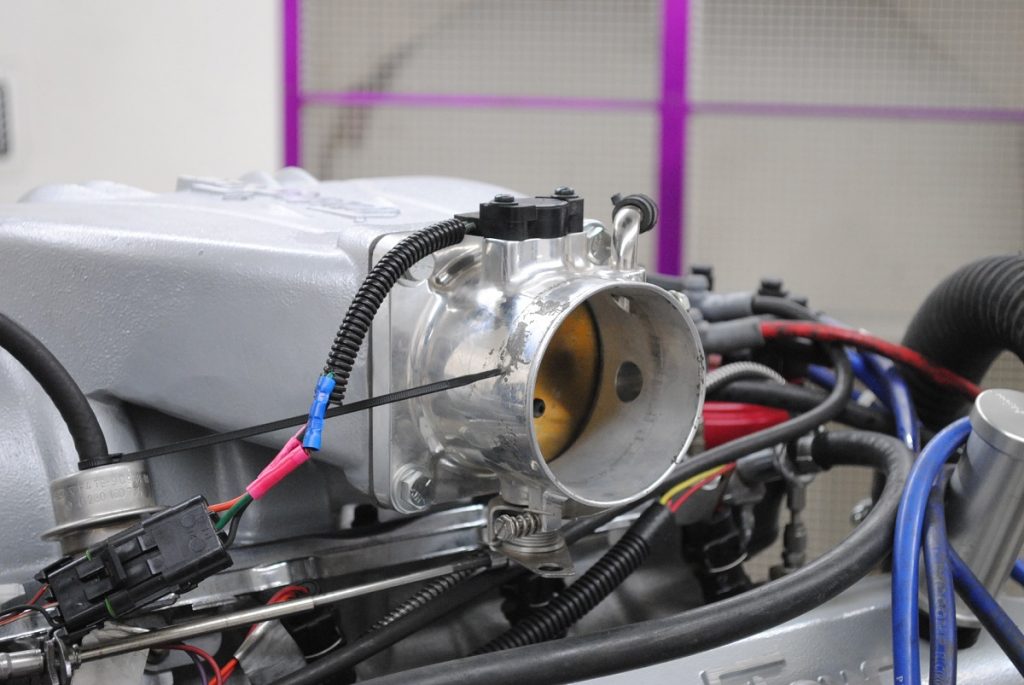
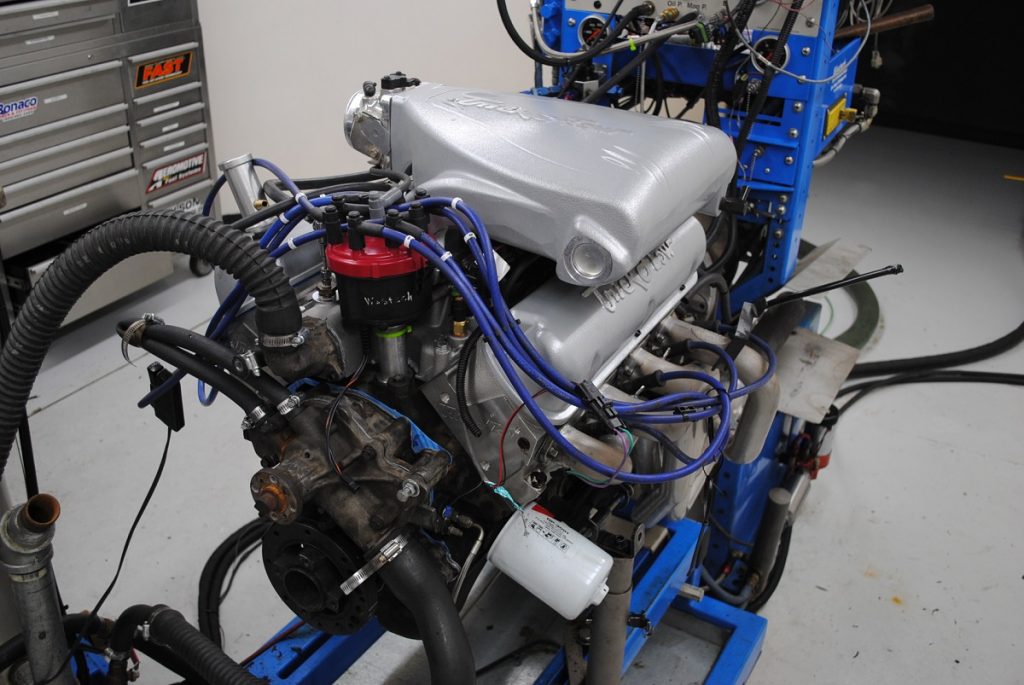

Still like the ole’ 289 Engine!
You couldn’t beat them.
Little modification, and they would SCREAM! Try and find one today?, Good luck
But why would you unless you are trying to do a period correct build for an early Mustang or something? You can find 302 roller engines everywhere and they’ll do the same thing that the 289 did but with more power. Even if you just used the same camshaft, heads and intake from the 289 and put pistons in it that would net the same compression ratio, the 302 would make more power…just maybe a couple hundred rpm earlier.
If it hadn’t been for the Mustang II, there wouldn’t have been any 5.0 Mustangs for people to buy!
A 302 can make plenty of power. Just look at the Trans Am cars from 50 years ago. They were competitive with the Chevys, Mopars and Javlins.
They were Cleveland headed engines…not exactly apples to apples is it? They also sucked in street trim because the heads are so massive on them that they didn’t make much for low rpm torque which ya kinda need in a street car unless you want to gear it like 5.13 and run around in the torque curve that the old original Boss 302 made power in. And you’d need a camshaft change, the Boss street car cam was completely wrong for a Boss 302. We’re talking about an engine that came from the factory with a camshaft that was done making power before the Boss came into its element. So Boss 302, cam swap and at least a 4.56 gear then you have a happy Boss, the average person just isn’t going to be happy driving it.
All is good though. I love that engine, it’s a great engine and Ford had to put it in a production car to go race which was the reason it was born.
[…] It has always been my contention that the 5.0L Mustang saved Ford, or at the very least, Ford Performance. Prior to the introduction of the 5.0L, Ford was serving up […] Read full article at http://www.onallcylinders.com […]
These articles would all be better if they all had dyno graphs on them with the overlays of each.
Thanks
Without the mustang ll…there wouldnt be a 50 mustang today !
Hey Ted, you might like this story then: The 1978 Ford Mustang King Cobra: A Nice Goodbye Hiss from the Pinto-Based Mustang II
Great info I just put on a new set of heads from eldebrok e-street 190 with factory cam,intake ,injectors,got cold air intake ,m.s.d.6al box and coil ,1.6 roller rockers stud mound .seems to run good what else should I give it to get all I can out of her and drive it daily if I want ?
Rich… nice article. My only problem is that the set up you put together cost MORE than I bought my car for! (1983 GLX 5.0 Mustang convertible) Can you recommend something that we backyard mechanics on a budget can do? My car is in very nice shape and I don’t need to fly… I just want to let the rice burners know that she’s not something to mess with, without breaking the bank! I have a wife.